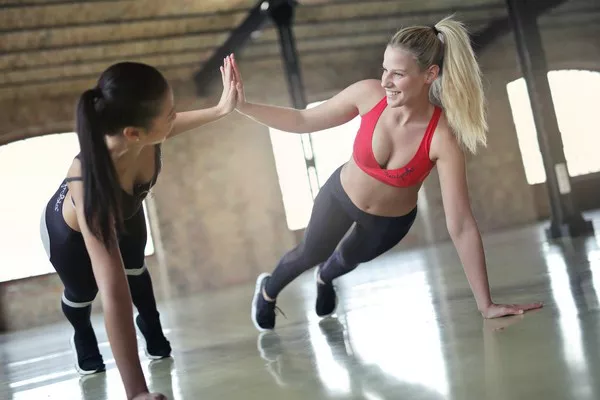Core strength training is a fundamental component of overall physical fitness that focuses on strengthening the muscles of the core, which includes the abdominal muscles, back muscles, and muscles around the pelvis. The core serves as a stabilizing foundation for the entire body, providing support for movements and maintaining proper posture. In this article, we will explore the concept of core strength training and its importance in physical fitness, with some guidance to work on it.
[inline_related_posts title=”SEE ALSO” title_align=”left” style=”list” number=”3″ align=”none” ids=”1337,1141,1219″ by=”categories” orderby=”rand” order=”DESC” hide_thumb=”no” thumb_right=”no” views=”no” date=”yes” grid_columns=”1″ post_type=”” tax=””]
1. Understanding Core Strength Training
Core strength training involves exercises that target the muscles of the core to improve their strength, endurance, and stability. These exercises can be dynamic, such as twisting, bending, or rotating movements, or static, focusing on holding positions that engage the core muscles. Dynamic exercises often mimic real-life movements and can enhance athletic performance, while static exercises can improve posture and overall core stability.
2. The Benefits of Core Strength Training
There are several benefits on core strength training:
Improved Posture: A strong core helps maintain good posture, reducing the risk of musculoskeletal imbalances and related pain.
Enhanced Balance and Stability: Core strength training enhances the body’s ability to stabilize during movement, which can prevent falls and injuries.
Better Athletic Performance: Athletes can generate more power and transfer energy efficiently between the upper and lower body with a strong core.
Reduced Risk of Lower Back Pain: Core exercises can alleviate lower back pain by providing support to the spine and reducing strain on the back muscles.
Enhanced Daily Activities: A strong core makes everyday tasks, like lifting objects and bending, easier and safer.
3. Core Training vs. Abs Training
While core training and abs training may seem similar, they target different muscle groups and serve distinct purposes. Core training aims to strengthen all the muscles around the torso, including the deeper muscles that support the spine. On the other hand, abs training predominantly focuses on the superficial muscles of the abdomen, primarily for aesthetic purposes. Core training is more comprehensive and functional, contributing to overall physical performance and stability.
4. Popular Core Strength Exercises
Core strength training involves a wide range of exercises that target the muscles of the core, including the rectus abdominis, transverse abdominis, obliques, and lower back muscles. Here are some effective core exercises that you can incorporate into your workout routine:
Plank: Get into a push-up position with your forearms on the ground and elbows directly beneath your shoulders. Engage your core, and hold the position, keeping your body in a straight line from head to heels.
Russian Twist: Sit on the floor with your knees bent and feet flat. Lean back slightly and twist your torso to one side, then the other, while holding a weight or medicine ball.
Dead Bug: Lie on your back with your arms extended towards the ceiling and knees bent at a 90-degree angle. Lower one arm and the opposite leg towards the floor, keeping your lower back pressed against the ground. Alternate sides.
Bicycle Crunches: Lie on your back, hands behind your head, and alternate bringing opposite elbow to knee while pedaling your legs.
Superman: Lie face down with your arms extended in front of you and legs straight. Lift your arms, chest, and legs off the ground, engaging your lower back and glutes.
Side Plank: Lie on your side with your elbow directly beneath your shoulder and legs stacked on top of each other. Lift your hips off the ground, forming a straight line from head to heels. Switch sides after holding for the desired time.
Leg Raises: Lie on your back with legs straight. Lift your legs towards the ceiling, engaging your core to control the movement. Lower them back down without touching the floor.
Woodchoppers: Stand with your feet shoulder-width apart and hold a weight or medicine ball with both hands. Rotate your torso and swing the weight diagonally across your body, as if chopping wood. Repeat on the other side.
Hollow Hold: Lie on your back with arms extended overhead and legs straight. Lift your head, shoulders, and legs off the ground, keeping your lower back pressed into the floor.
Mountain Climbers: Start in a plank position and bring one knee towards your chest, then quickly switch legs in a running motion, while maintaining a strong core.
5. Workouts and Programs Focused on Core Strength Training
There are numerous workouts and programs specifically designed to focus on core strength training. These programs often target the muscles of the core through a combination of dynamic and static exercises to improve core stability, strength, and endurance. Some of the most popular and effective core strength training workouts and programs include:
Core Circuit Training: This type of workout involves a series of exercises that target the core muscles, performed in a circuit format. Each exercise is done for a set amount of time or repetitions before moving on to the next one. Circuit training keeps the heart rate elevated while challenging the core muscles from different angles.
Pilates: Pilates is a low-impact exercise method that emphasizes core strength, flexibility, and body awareness. Many Pilates exercises involve engaging the core to stabilize the body during movements, making it an excellent choice for core training.
Yoga: Yoga incorporates various poses that require core engagement for stability and balance. Practicing yoga regularly can help strengthen the core, improve posture, and increase flexibility.
Plank Variations: Planks are an effective core exercise, and there are several variations that target different areas of the core. Side planks, forearm planks, and plank with leg lifts are some examples.
Abdominal Crunches and Twists: Traditional abdominal crunches and twisting exercises can be effective for targeting the superficial muscles of the abdomen.
Medicine Ball Exercises: Using a medicine ball adds resistance to core exercises, making them more challenging. Exercises like Russian twists and medicine ball slams engage the core muscles effectively.
TRX Training: TRX suspension trainers allow for a wide range of core exercises that utilize bodyweight and gravity to challenge the core muscles.
Barre Workouts: Barre workouts often include movements that require core stability, such as plies and leg lifts.
Functional Training: Many functional training exercises, like kettlebell swings and deadlifts, engage the core muscles as they support and stabilize the body during dynamic movements.
Core Yoga: Specific yoga classes or sequences may focus solely on core-strengthening poses and flows.
6. Special Benefits for Sedentary Lifestyles of Core Strength Training
Core strength training can be highly beneficial for individuals with sedentary lifestyles. Sedentary behavior, which involves prolonged periods of sitting or low physical activity, can lead to various health issues, including weakened muscles, poor posture, and increased risk of chronic conditions such as obesity, cardiovascular disease, and back pain.
Incorporating core strength training into a sedentary lifestyle can offer several advantages:
Improved Posture: Core exercises help strengthen the muscles that support the spine, leading to better posture even during extended periods of sitting. This can reduce the strain on the back and neck muscles, minimizing the risk of pain and discomfort.
Enhanced Core Stability: Core strength training helps develop stability and balance in the body. This can be especially beneficial for individuals with sedentary jobs who may experience muscle imbalances due to prolonged sitting.
Reduced Risk of Back Pain: Weak core muscles can contribute to lower back pain. Strengthening the core can provide better support to the spine, reducing the likelihood of experiencing back pain.
Increased Energy Levels: Engaging in regular core exercises can boost energy levels and combat feelings of fatigue often associated with sedentary lifestyles.
Better Overall Health: Core strength training is just one aspect of physical fitness, but incorporating it into a sedentary lifestyle can be a stepping stone towards adopting a more active and healthier way of living.
Easy to Incorporate into Daily Routine: Core exercises can be done without any equipment and require minimal space. This makes them accessible and easy to incorporate into a daily routine, even for individuals with limited time or space.
Improved Physical Functionality: Strengthening the core can enhance functional movements, making everyday tasks, such as lifting objects or bending, easier and safer.
Conclusion
Core strength training is a vital aspect of physical fitness that goes beyond achieving a sculpted abdomen. A strong core provides the foundation for stability, balance, and efficient movement. By incorporating core exercises into your fitness routine and maintaining proper form, you can enjoy the benefits of improved posture, reduced risk of injury, and enhanced athletic performance. Whether you choose traditional core exercises or explore disciplines like Pilates and yoga, investing in core strength training is a valuable step towards achieving overall health and fitness.
[inline_related_posts title=”Related Topics” title_align=”left” style=”list” number=”3″ align=”none” ids=”1334,1285,1282″ by=”categories” orderby=”rand” order=”DESC” hide_thumb=”no” thumb_right=”no” views=”no” date=”yes” grid_columns=”1″ post_type=”” tax=””]


































